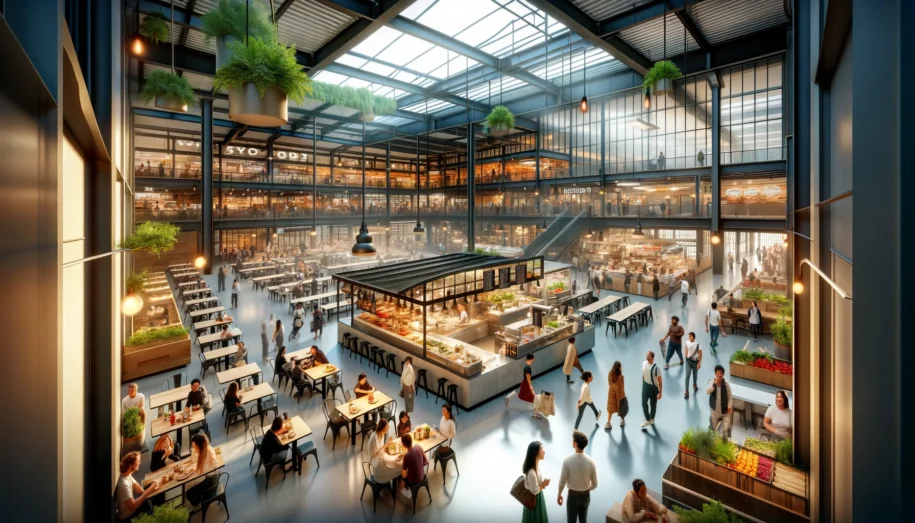In recent years, the American dining scene has undergone a remarkable transformation, marked by the emergence of food hall concepts. These dynamic culinary destinations have captured the hearts and palates of food enthusiasts across the nation, offering a diverse array of gastronomic delights under one roof. From bustling urban centers to quaint suburban enclaves, food halls have become synonymous with innovation, community, and culinary exploration.
A Fusion of Tradition and Innovation
At the heart of the food hall phenomenon lies a fusion of tradition and innovation. Drawing inspiration from centuries-old marketplaces and cultural hubs from around the world, modern food halls reimagine the concept for contemporary audiences. They blend the charm of communal dining with the convenience of modern amenities, creating vibrant spaces where food, culture, and community converge.
Diversity in Dining
One of the most compelling aspects of food halls is their unparalleled diversity in dining options. Unlike traditional restaurants, which typically specialize in a single cuisine or style, food halls offer a curated selection of culinary experiences under one roof. From artisanal pizzas and gourmet burgers to exotic street food and farm-to-table fare, there’s something to satisfy every craving and palate. This diversity not only caters to a wide range of tastes but also fosters a sense of culinary exploration and discovery.
An incubator for Culinary Talent
Food halls also serve as incubators for culinary talent, providing aspiring chefs and food entrepreneurs with a platform to showcase their creativity and culinary prowess. By offering flexible lease terms and shared kitchen spaces, food halls lower the barriers to entry for new ventures, allowing emerging chefs to test their concepts and build a loyal following without the financial risks associated with opening a standalone restaurant. This symbiotic relationship between food halls and up-and-coming chefs fosters a culture of innovation and experimentation, ensuring a constant influx of fresh and exciting dining experiences.
A Hub for Community and Socializing
In an era characterized by digital connectivity and virtual interactions, food halls offer a welcome antidote—a space where people can come together to share a meal, connect with friends and neighbors, and forge new relationships. With communal seating areas, live music performances, and community events, food halls cultivate a sense of belonging and camaraderie, transforming dining into a social experience.
The Future of Dining
As the popularity of food halls continues to soar, they are poised to shape the future of dining in the United States and beyond. With their emphasis on diversity, innovation, and community, food halls appeal to a broad spectrum of diners—from adventurous foodies seeking new culinary experiences to families looking for a casual and inclusive dining option. Moreover, their adaptable format makes them well-suited to meet the evolving needs and preferences of consumers in an ever-changing culinary landscape.
In conclusion, the rise of food hall concepts represents a culinary renaissance—a celebration of diversity, creativity, and community. By bringing together a diverse array of culinary offerings, fostering culinary talent, and creating vibrant communal spaces, food halls offer a compelling alternative to traditional dining establishments. As they continue to proliferate across the country, food halls are not just changing the way we eat—they are redefining the very essence of dining itself.
